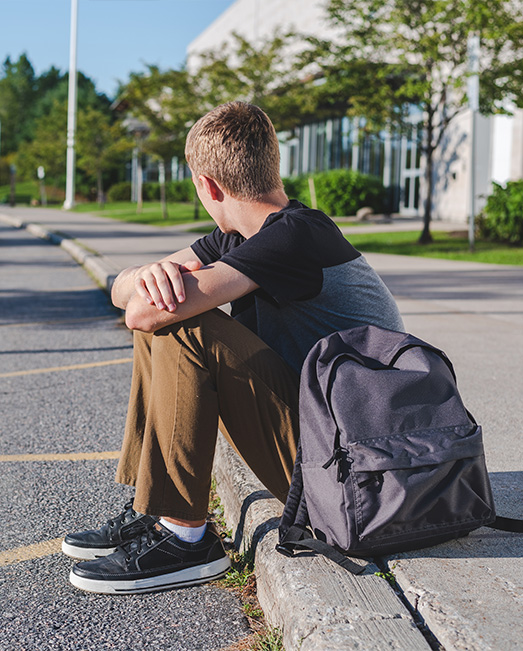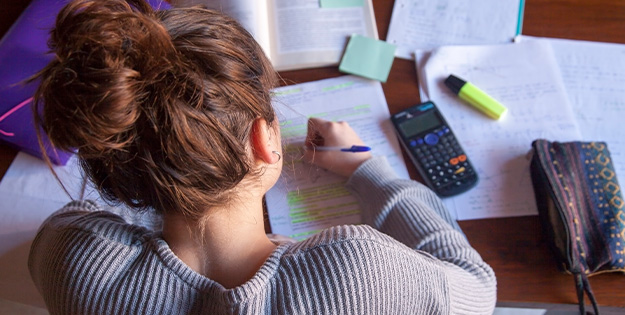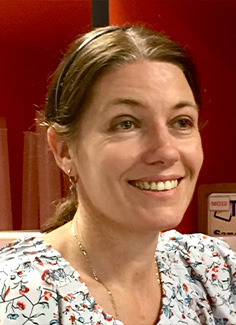Community
Copyright@ Australian Catholic University 1998-2025 | ABN 15 050 192 660 CRICOS registered provider: 00004G | PRV12008
Copyright@ Australian Catholic University 1998-2025 | ABN 15 050 192 660 CRICOS registered provider: 00004G | PRV12008

When NAPLAN scores, perfect attendance rates and ATARs are thrown out the window, how do you value an education? Dr Kimberley Wilson looks at the value of alternative schooling.
Dr Wilson knows better than most how easily students can become disengaged with education.
A promising young student with a natural love of science and math, Dr Wilson excelled in primary school. She achieved dux and seemed certain to continue her success at secondary school. But unexpectedly, her direction changed, and she began to disengage with school.
“I just started skipping classes. Then once I’d skipped a few classes it was getting hard to catch up, so I started missing more. A week becomes two weeks, and then a month, and eventually I just drifted out of the system,” she said.
Dr Wilson left school in Year 11, doing odd jobs and working in fast food joints to get by. At 21 she was expecting her first child and realised that she wanted a different outcome for her daughter. She obtained a certificate III in office administration and then applied as a non-recent school leaver to study a Bachelor of Primary Teaching. To her surprise, she was accepted and never looked back.
“I remember sitting in the lecture theatre feeling like this was the place I was meant to be.”

Since then Dr Wilson has studied, researched and taught across a range of curriculum areas including science education, educational psychology and education for cultural diversity. But arguably her most important work to-date has been in Flexible Learning Options (FLO), which provide alternative, tailored education for children who have disengaged from mainstream schooling.
“The kids who attend these FLOs are the kids that everyone else has given up on,” she said, “They might be couch surfing, struggling with drug use, bullying, mental health issues or poverty, or be young parents – issues a regular school may not be able to deal with.”
Regardless of the cause of disengagement the consequences can be devastating, to the community, to families and to the kids.
“Children who leave education early are more likely to have serious mental health issues, become involved in criminal activity, take drugs or rely on welfare.”
This is why re-engagement programs such as flexible learning are so important.
“The beauty of FLOs is that while they try to help the kids catch up on the academic side of things, they also provide wrap around services. When it’s needed they provide food or transport, they get kids in touch with counsellors, they get them into housing. There are so many things flexible learning options do to help these young people and give them a chance to get on a better track.
“FLOs succeed through the empowerment of young people. They come to the centres because they choose to be there, not because they’re forced to.
"They have a voice in what happens at the school and teachers aren’t put up on a pedestal – they’re called by their first names and the kids know the teachers aren’t there to tell them what to do, they’re there to guide and support them.”
Currently there are thought to be around 70,000 children attending a flexible learning centre in Australia. Classrooms come in all shapes and sizes but usually the smaller, the better.
“Broadly speaking the typical classroom has at least two staff to fifteen students, and even that’s not ideal. The smaller the staff to student ratio, the better,” said Dr Wilson.
Smaller may be better, but smaller also means a greater need for funds. Acquiring funding can be difficult for a learning centre that sits outside the mainstream.
“There is a big push towards accountability in education. But it can be difficult for FLOs to meet the funding body requirements and show concrete outcomes. Their outcomes are usually much softer than mainstream schools.”
Her research shows that FLO teachers see success as engagement in class activities and students improving their life-skills, such as being able to fill out forms or breaking the cycle of unemployment. But these outcomes aren’t always quantifiable, and to an outsider, may not look like success in the traditional sense.
“For example, you might have a young person who has extreme anxiety. They drop out of mainstream school because of zero attendance. They start attending a flexible learning centre and come in two days a week. This child may never do anything dramatic in terms of getting high grades, but their outcomes are no less impressive.
“Because they are re-engaged with learning they’re less inclined to take part in criminal activity. They may choose healthier lifestyle options, so they don’t end up with drug abuse problems, or, a few years down the track, they may end up getting stable part-time work. Obviously, these are all great things – but how do you quantify those outcomes to justify the funding that FLOs need?”
The answer lies, as it so often does, by attributing a monetary figure to create a clear understanding of the program’s value. Dr Wilson recently co-edited a book* which addressed this very issue.
“We examined, along with economists**, how the sector can capture the social and emotional wellbeing indicators that are not easily put into quantitative results. We were able to show that every dollar invested in FLO equated to between $5.90 and $17.60 in return to the community. When kids become re-engaged with education there is less welfare, less criminal offending, less drain on public health and more people in employment paying taxes.
“It was also shown that the current cohort of 70,000 Australian FLO students may generate up to $16 billion in economic benefits, over and above the cost of the program.”
Quantifying the economic impact of FLOs is a major achievement, but it’s not what truly motivates Dr Wilson. She is reminded to keep celebrating the smaller, individual victories of FLO students.
“I remember working with students on a science project in the hot, humid wetlands of North Queensland. For the first couple of weeks the kids just sat in the van watching the teachers digging holes and weeding thinking, ‘you guys are idiots’, but eventually felt sorry for us and ended up coming to help out.
“One of the young people was a very quiet, shy boy. He later went for an interview for the Green Corp program and they got in touch with us and said it was one of the best interviews they’d ever had. He was so confident, he came up and shook their hands.
Everyone was so proud of him. He had come such a long way from where he’d started.”
Dr Kimberley Wilson is a lecturer in science education at ACU’s Faculty of Education and the Arts. Keen to explore your future in education? Explore our courses.

*Gauging the value of education for disenfranchised youth, Flexible Learning Options was co-edited with Sue McGinty, Joseph Thomas and Brian Lewthwaite.
**Joseph Thomas and Christopher Nicholas, Estimating the economic returns to flexible learning options in Australia – a social return on investment analysis.
Copyright@ Australian Catholic University 1998-2025 | ABN 15 050 192 660 CRICOS registered provider: 00004G | PRV12008